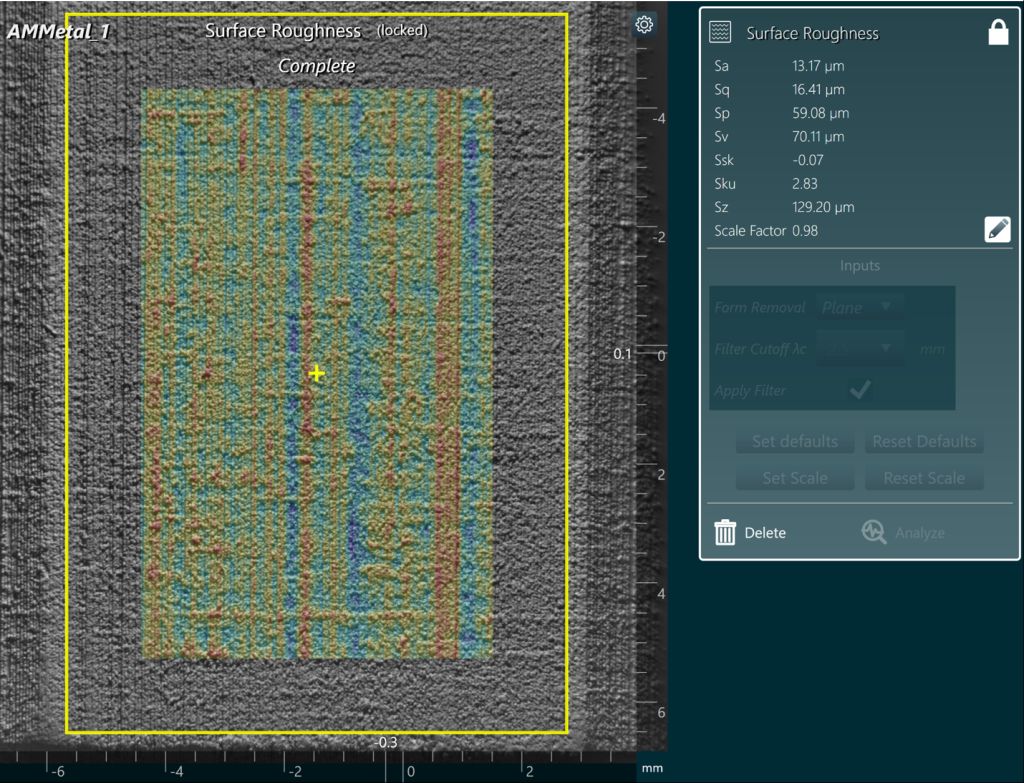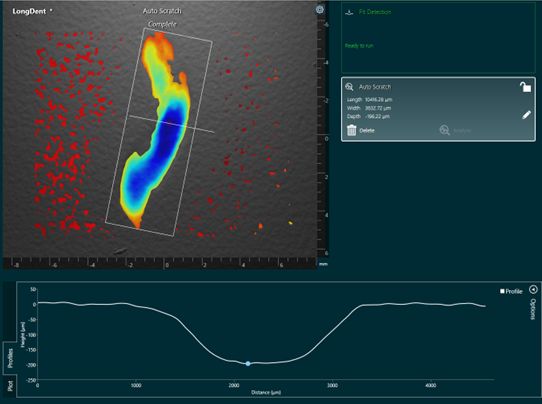Tactile, digitised insight into surface inspection

Thierry Mantel, vice-president of global distribution and key accounts at digital touch technology specialist, GelSight, discusses why its innovative elastomeric sensing platform brings added benefits to companies involved in aerospace manufacturing and maintenance applications.
The aerospace industry has endured a series of shocks in recent years, including the 2018 Boeing 737-Max crisis followed by the pandemic. While many aspects of the industry have started to recover and show an encouraging trajectory, the aerospace supply chain is facing two major bottlenecks: the shortage of raw materials (such as high-resistance alloys or titanium) and the lack of qualified workforce.
Together, these challenges are testing the resilience of the complex aerospace supply chain, and there’s no single, simple solution. Aerospace manufacturers see the digitisation of legacy industry processes and the reduction of part scrapping as critical steps to fortify the supply chain, but the implementation of robust, proven, and effective solutions to enable these improvements remains a barrier.
The lack of reliable, quantitative information from manual or outdated inspection processes contributes to over-machining and scrapping parts, which then slows down the manufacturing process or even worse, completely halts a production or assembly line. For MRO activities, unnecessary parts scrapping has a serious impact on the direct maintenance cost (DMC), potentially on the turnaround time (TAT), and ultimately on fleet availability.

Despite the strict quality control requirements in aerospace, surface inspection is one example of a challenging process where some approximation is often used, due to the lack of quantitative information and the nature of the different materials used in aerospace, like aluminium, titanium, carbon fibre, and transparent acrylic. Current surface inspection methods in aerospace manufacturing and MRO have several weaknesses because many inspections still rely on manual processes like the highly subjective fingernail or thumbnail test to inspect surfaces.
The drawbacks to most of the existing methods are: they are qualitative but not quantitative; are not repeatable or traceable; they are time and human capital intensive; can require expensive, complex and static laboratory equipment, and are dependent on the optical properties of the surface to be controlled.
Making the digit digital
This is where GelSight offers an enormous advantage for the numerous quality control and surface inspection processes throughout the aerospace manufacturing, assembly, and the MRO processes. GelSight’s technology is based on the specific optical properties of an elastomeric sensor (ThermoPlastic Elastomer gel) which precisely conforms to any kind of surface in contact with the gel sensor.
The GelSight Mobile system (Fig 1.) uses this tactile intelligence technology to provide rapid, repeatable, non-destructive testing for manufacturing and MRO operations of engines, aerostructures, landing gear, and other critical components. GelSight’s tactile sensing technology is also perfectly suited to measure and analyse scratches, dents, tool marks, weld inspection, corrosion marks, fastener flushness, shot peening, and more.
Additionally, the portability of GelSight Mobile’s enables users to perform these measurements and analyses directly on the shopfloor or under the wing in a maintenance hangar. The quantitative, digital nature of the resulting outputs allows GelSight Mobile to be easily integrated in a smart factory environment and expedite production and assembly cycles in the aerospace industry.
The intelligent touch

GelSight’s technology uses an intelligent elastomeric sensor that enables instant visual feedback, displaying surface detail on contact using an industrial digital camera sensor and six LEDs mounted in the sensor. From these different illumination channels, six individual images are captured by the digital camera within a fraction of a second.
Based on these six images and leveraging a proprietary stereophotography algorithm, the system recon
structs an image of the 3D surface in contact with the sensor within a few seconds. A heightmap of five million data points is then created, allowing the intuitive software interface to provide position, depth, and other 3D surface measurements at a high resolution. This accurate and repeatable measurement and analysis provides crucial information that allows immediate decisions to be made directly on the shopfloor or out in the field. Finally, the automatic generation of a customisable report for traceability and quality assurance closes the process.
To illustrate the application of GelSight Mobile on physical configurations, (Fig 2.) and (Fig 3.) respectively present the measurements of the surface roughness of a metallic 3D printed part and a scratch on an engine component. These types of analyses are typically made in only a few seconds with GelSight, compared to the minutes to hours that surface roughness measurements can take with optical methods like confocal microscopes.
Authentic applications
In most cases, GelSight Mobile has passed strict qualification protocols and is integrated in formal quality control processes both for new manufacturing and MRO operations. The versatility and portability of the GelSight device provides users with a powerful solution that can scan different materials directly on the shopfloor or in a maintenance hangar without the need for different setups. Its accurate and repeatable measurements also ensure fast and well documented decisions.
For the engine experts at Germany’s MTU Aero Engines, reliable information on part defects is important to meet the stringent requirements of engine production, identify whether they are minor or major flaws that need to be repaired or replaced, and determine if this will delay the engine assembly. As a result, MTU has replaced its traditional manual impression and lab inspection processes with GelSight Mobile to detect and document even small defects, ultimately accelerating engine assembly. The MTU team now can significantly simplify and speed up inspection procedures, while still arriving at sound results about the quality of engine parts in a reliable and repeatable way.
Similarly, cargo airline Kalitta Air’s maintenance team previously relied on a variety of measuring tools including micrometers, calipers, and optical micrometers to perform heavy checks and major overhauls and part repairs. A lot of time was spent measuring and then remeasuring parts, costing thousands of dollars and man-hours per year. By partnering with GelSight, Kalitta’s Maintenance now has a platform to perform detailed, accurate surface inspection processes that can generate significant gains in productivity in a variety of their MRO applications, while also reducing the costs associated with many manual or tool-based inspection techniques. As an example of the cost savings, Kalitta Maintenance was able to reinspect damage on seven individual C-1 blades for a CFM engine, and redisposition them into active inventory, saving the customer US$350,000 in replacement parts using GelSight’s technology.
Manual, qualitative measurement and inspection processes are holding the aerospace industry back and it’s time for digitisation throughout the supply chain to help drive the industry forward. GelSight is bringing a disruptive digital solution for the measurement and analysis of surface anomalies such as scratches and dents, or surface finish and roughness. Its ease of use, versatility, and portability makes GelSight a unique and essential tool which can directly be used on the shopfloor. Its accuracy and repeatability also allow fast and documented decision making, which directly leads to productivity gains and major cost savings for aerospace manufacturing and MRO organisations.











